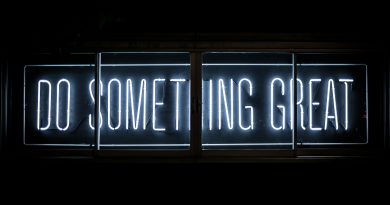How Does Time Pressure Influence Risk Preferences? Answers from a Meta-Analysis
Want to take advantage of an early bird ‘special’ for a cruise package before it expires in a few hours, even though you are unsure that your work schedule will allow you to actually go? Before all seats are gone, you must decide between buying tickets for the first round of the next US Open to make sure you can watch your favorite tennis player or buying a ticket for the final although the odds are not optimistic according to bookmakers?
As these situations illustrate, it is not uncommon for consumers to make decisions that have uncertain outcomes under time pressure. This has prompted a large body of work in consumer research, behavioral economics, and other decision-making domains to examine whether time pressure promotes risk taking or risk aversion in decisions. Unfortunately, the evidence accumulated thus far is mixed; by reviewing over 40 years of literature, the authors—Alex Belli, François A. Carrillat, Natalina Zlatevska, and Elizabeth Cowley—found that 61.5% of the effects indicate that time pressure induces risk taking, while 38.5% of the effects show the opposite: time pressure promotes risk aversion. Even the investigation of moderators that could explain this diversity of effects, such as the framing of the decision, has produced conflicting findings.

To remedy this ambiguity, the authors identified several contingency factors belonging to 4 conceptual categories—the nature of the time constraint, negative outcome salience, negative outcome severity, and vulnerability to the outcomes—that have not been reliably identified in the literature so far. Based on 213 effect sizes from 83 papers available from 1981 to 2021, their meta-analytic study determined which moderators drive the effect of time pressure on risk preferences while controlling for the methodological characteristics of primary studies. An overview of some of the results is provided below.
First, how time pressure is induced affects risk preferences. An absolute time constraint (i.e., comparing a time pressure and a no time pressure condition) increases risk preferences in comparison to a relative time constraint (i.e., comparing different levels of time pressure, such as high vs. low). A relative time constraint shifts the level of time pressure from low to high, prompting the adaptation of decision-making by relying more heavily on negative information, which leads to greater risk-avoidance than an absolute constraint.
Second, the learning mode plays an important role in the effect of time pressure on risk preferences. Learning the odds of uncertain outcomes through explicit information (i.e., learning by description) decreases the effect of time pressure on risk preferences compared to learning them through trial-and-error (i.e., learning by experience). The authors hypothesize that this occurs because when consumers learn by description, they tend to overestimate the occurrence of more negative extreme events, lowering their risk preferences.
Third, while the authors do not find a moderating effect of culture as a proxy for vulnerability, they discover some interesting second-order interactions between culture and framing (loss versus gains). Under time pressure, the effects established by prospect theory apply in survival cultures like India, but they are reversed in self-expressive cultures like the US. In survival cultures, where consumers value economic and physical security, the lack of resources to cope with looming losses may increase risk-seeking behaviors under time pressure. Conversely, in self-expressive cultures where consumers have enough resources to deal with losses, time pressure may reduce the weight of looming losses, hence decreasing risk-seeking.
These findings offer insight to marketers and public policymakers into what conditions promote risk preference under time pressure and arm them with an actionable basis for ensuring and protecting the best interest of organizations and consumers in risky decision contexts.
Read the full paper:
How Does Time Pressure Influence Risk Preferences? Answers from a Meta-Analysis
Alex Belli, François A. Carrillat, Natalina Zlatevska, and Elizabeth Cowley
Journal of Consumer Research, ucad053,
https://doi.org/10.1093/jcr/ucad053



